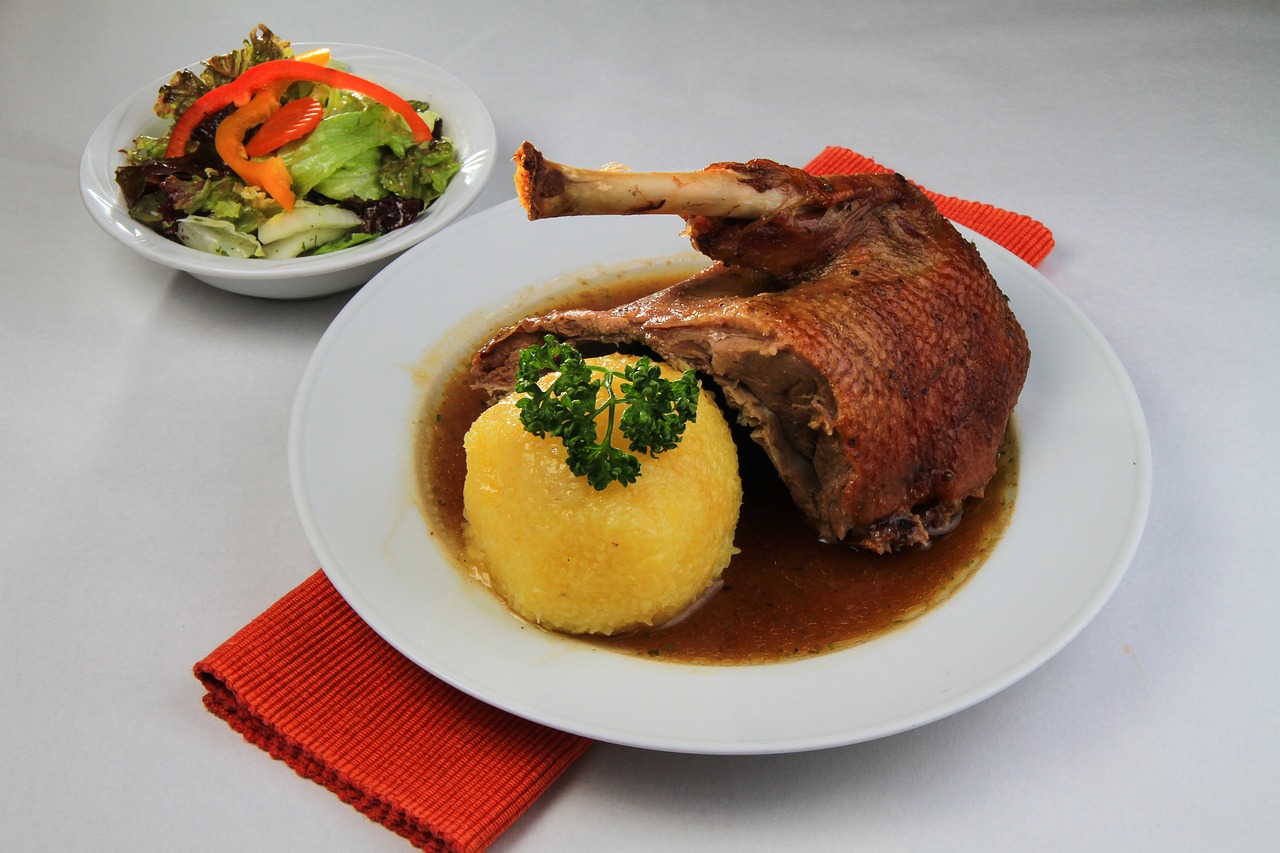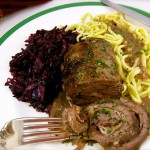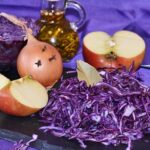
When it comes to celebrating Christmas in Germany, a well-prepared Weihnachtsgans, or Christmas Goose, is the highlight of the holiday feast. This dish is steeped in tradition and savored for its rich, succulent meat and crispy skin. Preparing a German Christmas Goose involves a series of steps that lead to an impressive and delicious result. Let’s embark on a culinary journey to create a German Christmas Goose that will be the star of your holiday table.
Preparation Time: 24 hours (includes marinating time) Cooking Time: 3-4 hours Total Time: 27-28 hours Servings: 6-8
Ingredients:
For the Goose:
- 1 whole goose (10-12 pounds), thawed if frozen
- Salt and pepper, to taste
- 2 apples, quartered
- 3 onions, quartered
- Fresh marjoram, thyme, and sage (about a handful)
- 2 tablespoons of vegetable oil
For the Stuffing:
- 1/2 pound ground pork
- 2 cups of dried breadcrumbs
- 1 large onion, finely chopped
- 2 apples, peeled and diced
- 1/4 cup of dried cranberries or raisins
- 1/2 cup of chopped chestnuts (optional)
- 1 teaspoon of dried marjoram
- Salt and pepper, to taste
For the Gravy:
- 4 cups of chicken or goose stock
- 1/4 cup of flour
- Salt and pepper, to taste
- Optional: red wine or port for deglazing
Instructions:
- Marinate the Goose:
- Begin by cleaning the goose thoroughly. Remove giblets, excess fat, and pin feathers.
- Pat the goose dry with paper towels.
- Season the goose inside and out with salt and pepper. Rub the seasoning into the skin and cavity.
- In a large container or roasting bag, place the goose and refrigerate for 12-24 hours to allow the seasoning to penetrate the meat.
- Prepare the Stuffing:
- In a large bowl, mix together the ground pork, breadcrumbs, finely chopped onion, diced apples, dried cranberries or raisins, chopped chestnuts (if using), and dried marjoram.
- Season with salt and pepper, and mix until all the ingredients are well combined.
- Cover and set aside in the refrigerator until ready to stuff the goose.
- Stuff and Truss the Goose:
- Preheat your oven to 350°F (175°C).
- Remove the goose from the refrigerator and stuff the cavity with the prepared stuffing, quartered apples, onions, and fresh herbs.
- Truss the legs together with kitchen twine and tuck the wings under the body to prevent them from burning.
- Place the goose breast-side up on a rack in a large roasting pan.
- Brush the goose all over with vegetable oil.
- Roast the Goose:
- Roast the goose in the preheated oven for about 3 to 4 hours.
- Baste the goose with its own juices every 30 minutes. If the skin is browning too quickly, cover it loosely with aluminum foil.
- The goose is done when an instant-read thermometer inserted into the thickest part of the thigh reads 165°F (74°C) and the juices run clear.
- Rest the Goose:
- Once cooked, remove the goose from the oven and let it rest for at least 20 minutes before carving. This allows the juices to redistribute throughout the meat, ensuring it remains moist and flavorful.
- Make the Gravy:
- While the goose is resting, prepare the gravy. Pour off all but about 4 tablespoons of fat from the roasting pan.
- Place the pan over medium heat and sprinkle in the flour, stirring to combine with the fat.
- Cook for a few minutes until the flour turns golden brown.
- Gradually whisk in the stock and bring to a simmer. If desired, deglaze the pan with a bit of red wine or port for added depth of flavor.
- Season with salt and pepper, and continue to simmer until the gravy has thickened.
- Strain the gravy through a fine-mesh sieve for a smooth consistency.
- Serve the Goose:
- Carve the goose and serve with the stuffing and gravy.
- Traditional accompaniments include red cabbage, potato dumplings, and roasted chestnuts.
Tips for the Perfect German Christmas Goose:
- Marinating: Allowing the goose to marinate with the seasonings for at least 12 hours will enhance the flavor.
- Pricking the Skin: Prick the skin of the goose all over with a fork before roasting to help render out the fat and achieve a crispier skin.
- Monitoring Temperature: Keep an eye on the internal temperature to avoid overcooking, which can dry out the meat.
- Fat Collection: Goose renders a lot of fat, which can be collected and used for roasting potatoes or vegetables for a flavorful side dish.
Creating a traditional German Christmas Goose may take time, but the result is a festive and mouth-watering dish that’s sure to impress your guests. This classic recipe honors the German holiday tradition and brings the warmth and joy of Christmas to your dinner table. Gather your loved ones and enjoy the rich flavors and tender meat of your perfectly roasted Weihnachtsgans.
Nutrition Information:
- Calories: 1100
- Fat: 67g
- Carbohydrates: 23g
- Protein: 95g
Please note that the nutrition information can vary depending on the size of the goose and the ingredients used.
Related articles:
15 Best German Christmas Recipes
Roast Goose (Gänsebraten)







